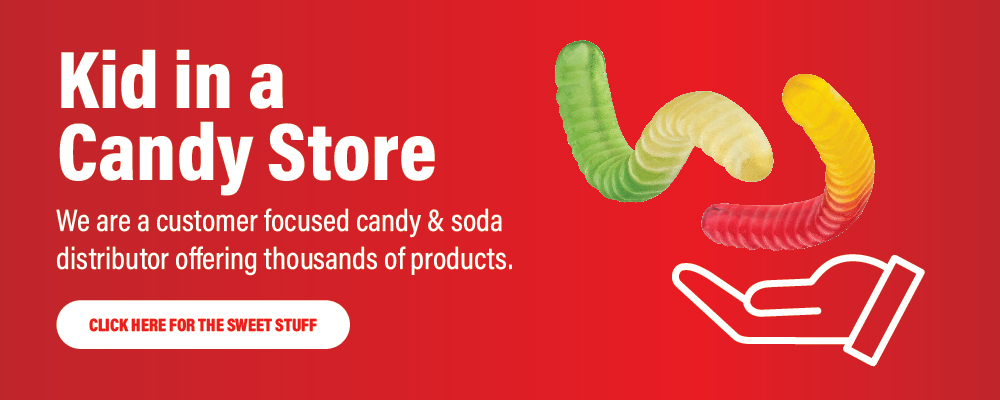The Candy That Started a War: The 1947 Chocolate Rebellion
| BY NEAL ROTHSTEIN

The year was 1947, Canadian troops had just returned home from defeating fascism in World War II. But another conflict was brewing, this one involving children, chocolate bars, and the betrayal of a sweet, sweet promise: a 5 cent price tag. It would come to be known as the 5 Cent War, or the Candy Bar Strike, and by the end, thousands of children would storm government buildings and sign pledges to never to buy an 8 cent chocolate bar.
These actions would lead to a serious, albeit brief period of economic turmoil for the Canadian chocolate industry, and would end up stoking fears of communism, all while giving an entire generation of children their first taste of political activism.
Life After WWII – The Kids Are Not Alright!
During WWII, the Canadian government had instituted strict price controls on numerous goods, including food, clothing, rent, etc. and had also frozen the nation’s wages. As most of the young men were sent off to the theaters of war in Europe and the Southeast Asia, many mothers had taken up the factory jobs to keep the country running at home. Once the war officially ended in September of 1945, the troops started coming home, and by 1947 Canada started lifting many of their price controls. That’s when the price of everything started to climb.
Milk was the first product to see a steep increase in price, followed by sugar, and other essential food items. Since these were common ingredients to a lot of other products, this created a chain reaction causing inflation to run seemingly out of control. The ripple effects hit nearly every product on grocery store shelves.

In Canada, the fear of poverty and unemployment was already running rampant. Small indulgences became a luxury, and seemingly overnight the price of a chocolate bar rose from 5 cents to 8 cents. That’s a whopping 60% increase, and for Canada’s children, that was simply too much to bear.
The First Outcry: Lollipop Brigade, Assemble!
If we know one thing, it’s that people sure do love their chocolate, and that’s especially true for school children. For one group of kids in Ladysmith, British Columbia, the price hike felt like a personal attack, so they decided to take action.
One local teen, Parker Williams had his own car, so he and his friends painted slogans on the automobile and wrote signs that read: “Don’t Buy 8¢ Bars!” and “We Are Smart. Let the Sucker Pay 8¢!” They even chanted a song they wrote impulsively:
“We want a 5 cent chocolate bar, 8 cents is going too darn far. We want a 5 cent chocolate bar. Oh, we want a 5 cent bar."
They marched up and down the main street during their high school lunch hour in protest every day, in front of the Wigwam Café (the local confectionery where the price increase was first discovered). This soon attracted the attention of the local newspaper who took their picture and published an article about their grievances.

Within a matter of days, kids in Victoria (the provincial capital of British Columbia) heard the news and began their own round protests. The newspapers had dubbed them the “Lollipop Brigade” and their “Chocolate Bar Strike” began rapidly spreading like wildfire nationwide. Within days children all across Canada were protesting in cities like Toronto, Calgary, Edmonton, Winnipeg, Montreal, Ottawa, Quebec City, and the Maritime provinces.
On Bloor Street in Toronto, the protest hit especially hard with over 500 children showing up to protest the price hikes. The next day in the Canadian capital of Ottawa, 60 children stormed the Parliament Buildings demanding the return of 5 cent chocolate bars and brought official government business to a grinding halt!
Ice cream cones became a symbol of the nationwide outcry, because they were still priced at 5 cents a cone. Some children even had signs that read: “We’ll Eat Worms Before We Eat 8¢ Chocolate Bars!”
How Did Adults Reacted to the Nationwide Candy Protest?
At first, adults found amusement in the children protesting, and no one really tried to stop it. I mean, what’s more Canadian than some polite, sugar-fueled children staging peaceful protests outside high school doors and corner stores? Many adults even laughed when they went by, and kids didn’t appreciate that because to them the inflated price of their favorite candies was serious business!
Most of the children’s parents were supportive of the candy strikes across the country as they were also seeing the prices of everyday goods increase. They would drive their kids to the frontlines and even help them paint signs. Some even paid to print flyers and distributed snacks to the protesting children.
A few candy shops caved, temporarily reducing the prices of their chocolate bars back to 5 cents, just to appease the growing mobs outside their businesses. While this may have only been a temporary victory for the protesters, it was a welcomed one that signified the protest might be working successfully.
At one point during the Chocolate Rebellion, retailers had reported an almost 80 percent drop in chocolate sales, hitting the national confectionary industry hard. It seemed as though the protests were working, as companies like Rowntree, and Willard’s Chocolate published open letters in local newspapers, explaining the price increase and pleading to the public to support their decision to raise prices.

Much like today’s chocolate prices, in 1947, candy companies faced a number of economic challenges. Cocoa bean harvests from West Africa were experiencing crop disease, and the cost of other ingredients had also increased. This is why the price had to be raised, but the kids weren’t having any of it. These protests marched-on… that is, until something really strange happened.
The Plot-Twist: Was Chocolate Tied to Communism?
As the movement had quickly gained steam throughout late April and early May of 1947, a surprising death nail in the coffin of dissent appeared, seemingly out of nowhere. On May 3, 1947, The Toronto Evening Telegram dropped a bombshell accusation: The candy rebellion, they claimed, wasn’t really about chocolate – it was a communist front. The paper alleged (without evidence) that the National Federation of Labor Youth had orchestrated the protests as part of a sinister plot. Their goal? The creation of chaos across Canada, turning children against capitalism, and somehow, sparking a world revolution.
The idea that schoolkids demanding cheaper candy were secret revolutionaries might sound a little absurd today. But in 1947, with Cold War tensions rising, even a sugar-coated protest could be easily twisted into a Red Scare headline. The kids, who mostly avoided politics in favor of Bugs Bunny cartoons were rightfully stunned, as were their parents. Was it really a communist plot? Or just kids who wanted to enjoy their chocolate bars?
Just a couple of years earlier, a Soviet cipher officer, Igor Gouzenko had defected from the Russian Embassy to the Canadian government. In this move, he had stolen hundreds of documents from the Soviets, proving that they had been spying on Canada, the United States, and Great Britian during WWII. This created the “Red Scare” in the West, and the information had a close relationship to Winston Churchill’s infamous “Iron Curtain” speech in 1946, which many cite as the official start of the Cold War.
As most Canadian children and their parents didn’t want to be associated with communism, the protests fizzled out almost immediately after the article was published. Although this “rebellion” was short-lived, the price of chocolate was lowered to 7 cents, but that price didn’t last very long. Future chocolate price increases were never again met with such indignation.

A Bittersweet Legacy
The 1947 Candy Bar Strike may seem like a quirky footnote in history, but it’s a surprisingly powerful reminder that even the youngest voices can help shape public discourse, especially when chocolate is involved!
While today’s economic pressures may stem from different causes – like global supply chain issues, inflation, and tariffs, the feeling is eerily familiar. Everyday people are still navigating rising prices, and sweet treats often aren’t immune to shifting economic circumstances.
Here at Redstone Foods, we love digging into the rich (and sometimes rebellious) history behind the world’s favorite candies. Whether you’re a history buff, a nostalgic snacker, or just someone who loves a good chocolate bar, be sure to check out our blog for more fun stories and fascinating facts from the wide world of sweet treats!
If you're looking for wholesale candy, soda, and snacks at reasonable prices, contact Redstone Foods today, or sign up for an account with us online. We are America's favorite candy distributor, and we can't wait to hear from you!
1-800-444-3520






